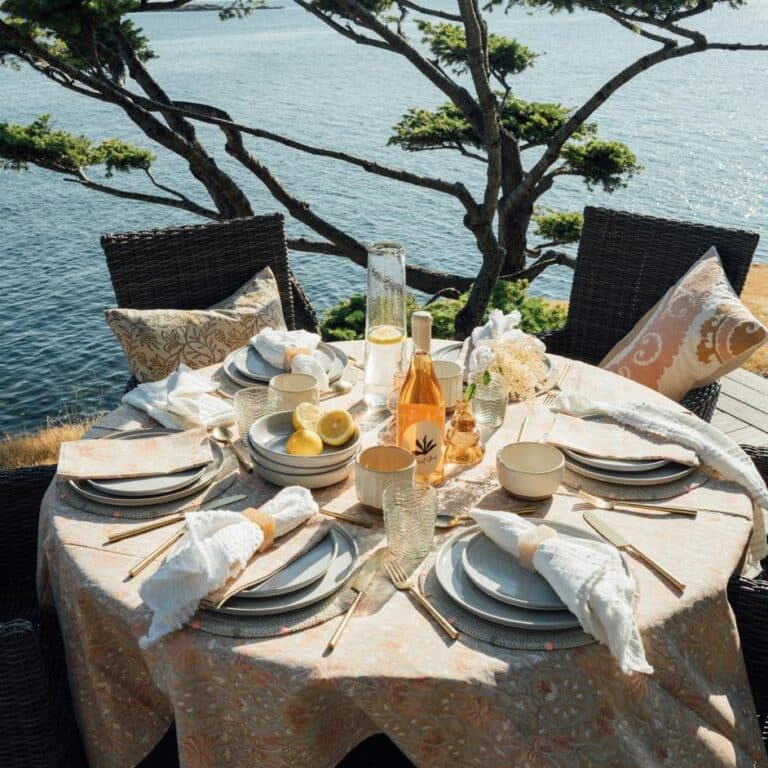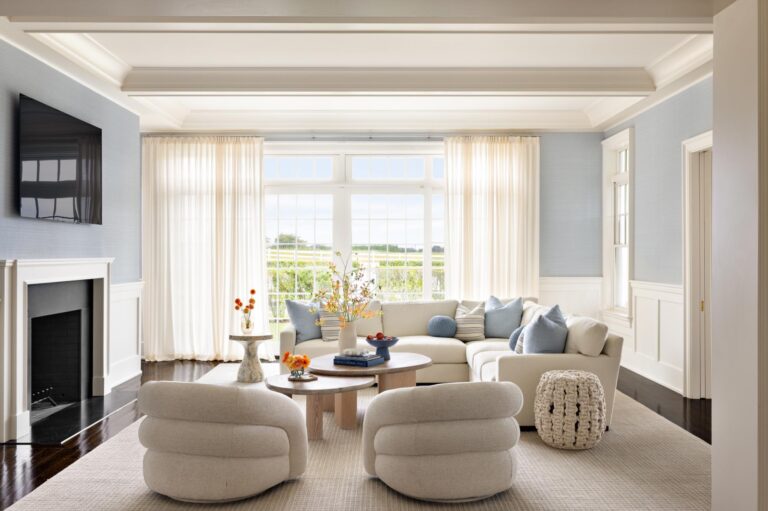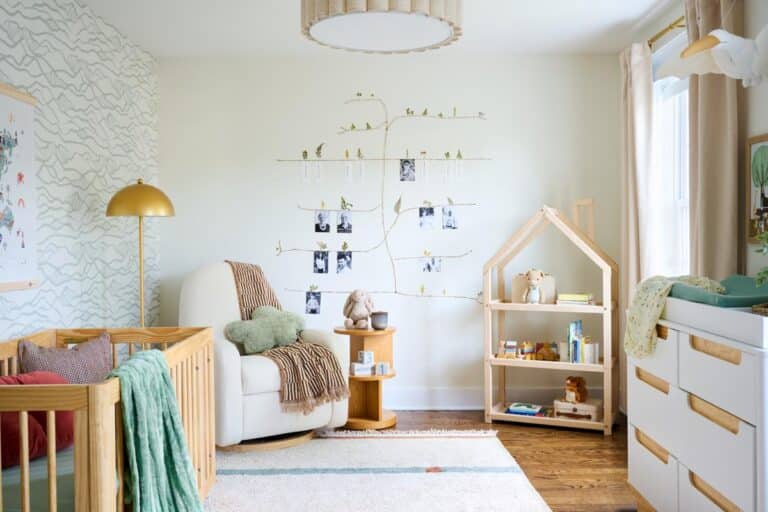Designing a kitchen is challenging. There are so many details that go into it, from the style of countertop to the flooring to the faucet. One of the most critical elements to any kitchen is the countertop. This is where you will do all of your prep work, sometimes eat meals and serve them, too! Plus, they might serve as the occasional homework space. So how do you choose what material is best for you? “Certain materials are best suited for certain things and not for other purposes, so they are not interchangeable,” advises Christopher Peacock, founder of his eponymous custom cabinetry design firm. Before you select which countertop is right for you, do your homework. “Choosing the perfect countertop surface is key to your kitchen project,” says Peter Deane of Deane Inc., in Stamford, CT. “Consider the aesthetics and maintenance preferences; let them guide you to a surface that not only complements your space but also suits your lifestyle. For example, if you can tolerate a countertop that will etch and stain over time, then marble is a perfect match for you. However, if these attributes stress you out, consider engineered material such as quartz.”
To get you started, we talked to a few pros to find out what countertop materials best suit your kitchen personality.
Wood
For the Naturalist
Wood has been around for centuries as a kitchen surface. It’s natural, (biodegradable upon disposal) and brings lots of warmth into your kitchen design with earthy tones and incredible depth. But wood and water don’t mix so many kitchen pros advise against it as a countertop surface with the exception of two instances:
Those who love cooking from scratch and are frequently chopping and dicing to enjoy earth’s bounty, might like an area of butcher block countertop on the island or peninsula. It makes a practical, time-saving solution. Plus, it’s the most antimicrobial surface out there, because wood is a breathable material and won’t harbor bacteria. “If my client is an avid cook or aspiring to be one, I will often suggest an oiled butcher block countertop to be placed in their prep area,” says Deane.
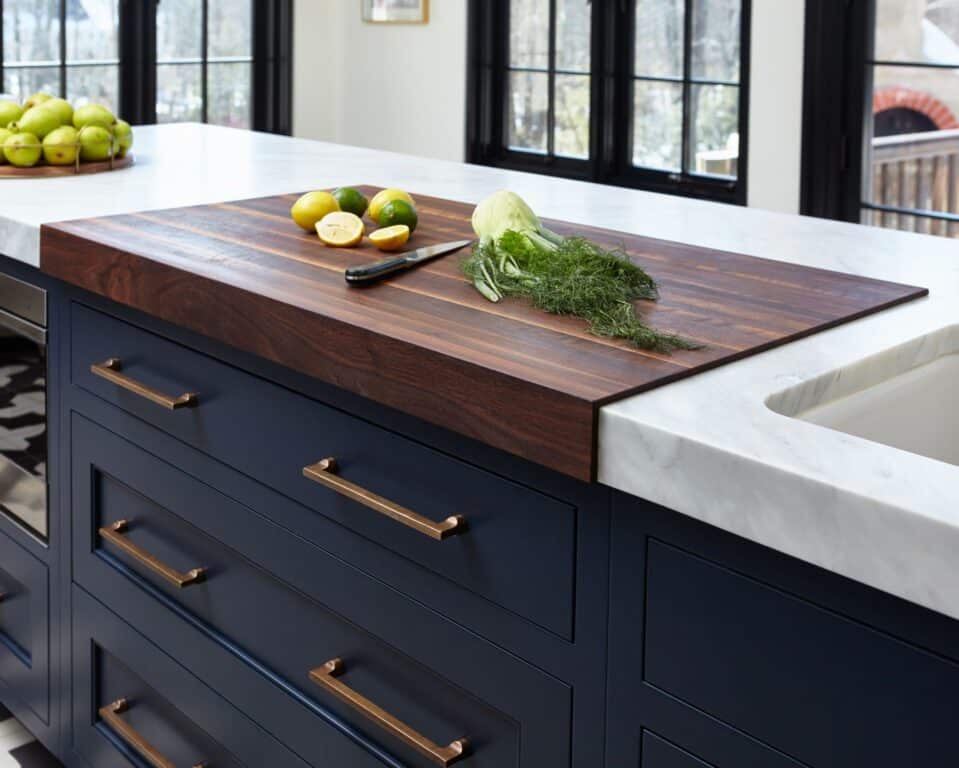
Plus, he adds, it makes for a gorgeous accent aesthetically: “Integrating a wood countertop into the kitchen provides warmth and character.”
If you opt for wood for either reason, be mindful that it does need to be taken care of. Clean countertops immediately after spills, especially wine or coffee. It’s porous and will absorb stains. Oil butcher blocks regularly with mineral oil, which is food safe and will keep your wood looking beautiful for years to come.
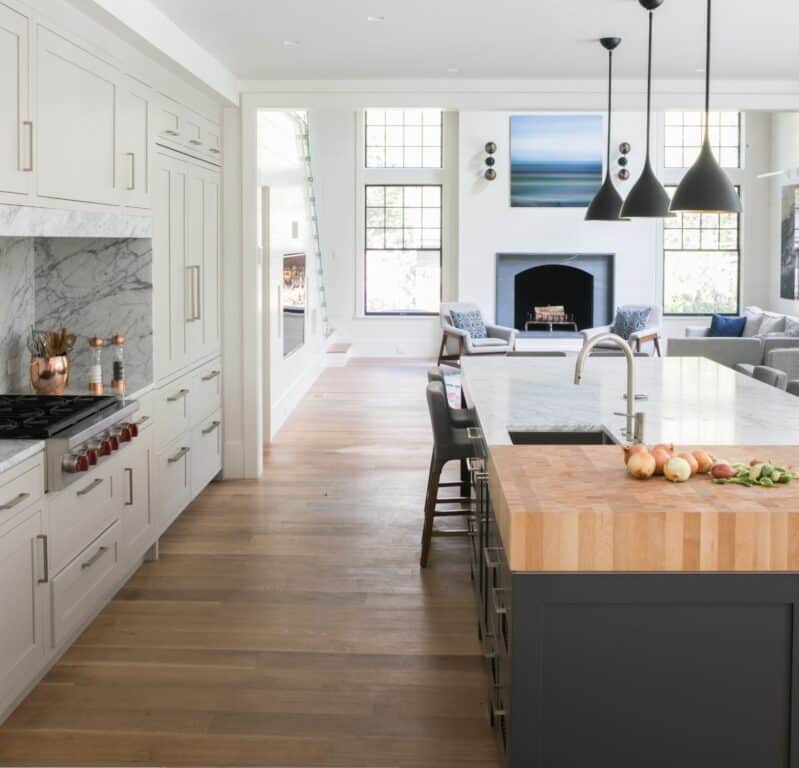
Marble
For the Aesthete
One of the longest used natural stones, marble has been a design feature since ancient Greek and Roman civilizations. The whitest of all the natural stone out there, its natural beauty can’t be matched by lookalikes—although many try. “For me, it’s always marble,” says Peacock, who turns to marble frequently for his discriminating clientele. With a rich history and stunning veining, perhaps it’s why this countertop surface has never gone out of style and is considered the most beautiful of all the countertop surfaces. It also makes the ideal surface for those who bake because it keeps dough cold when you roll it out. “It’s for the client who appreciates the beauty of this natural stone and is accepting of a living finish,” mulls Deane, when asked how he would categorize it as a countertop.
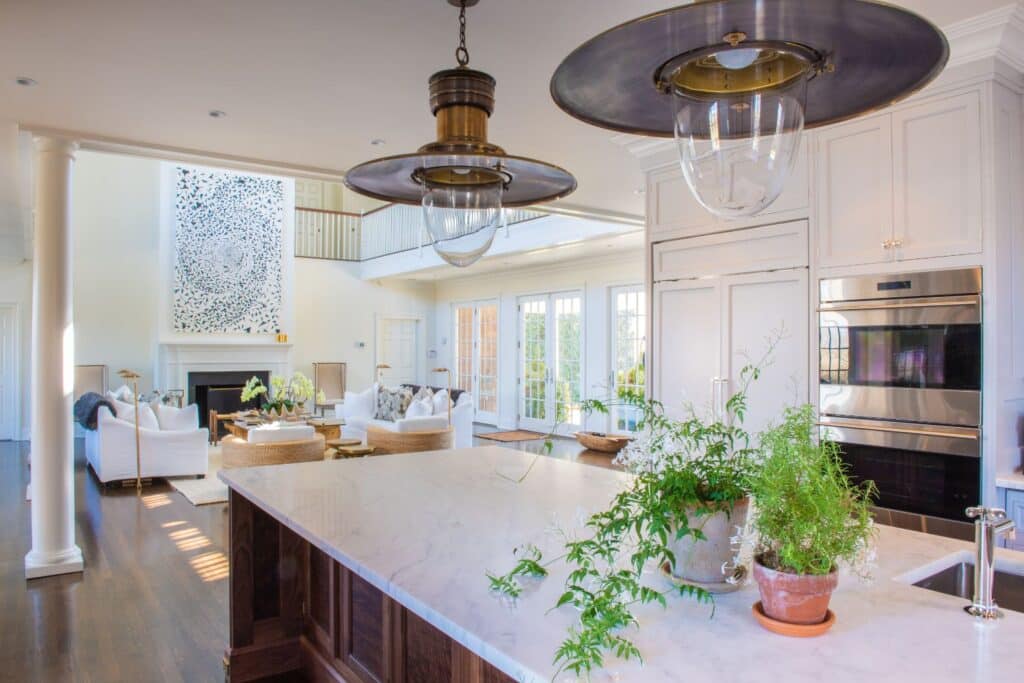
Marble is susceptible to scratches and dings and sensitive to acidic foods, so it can be considered high maintenance. Wipe spills immediately or they will stain and etch the surface—particularly acidic things like lemon and wine. Having your surface sealed is a good idea to protect it long term. “It’s just as durable as everything else, it’s just going to wear differently,” says Gabriella Najmy, director of NuKitchens in Norwalk, CT. “I like to compare it to hardwood floors. You know overtime that the golden retrievers are going to leave those marks running around the hardwood floors, but you accept the properties of it because you love the softness and the beauty of it.”
Quartz
For the Precisionist
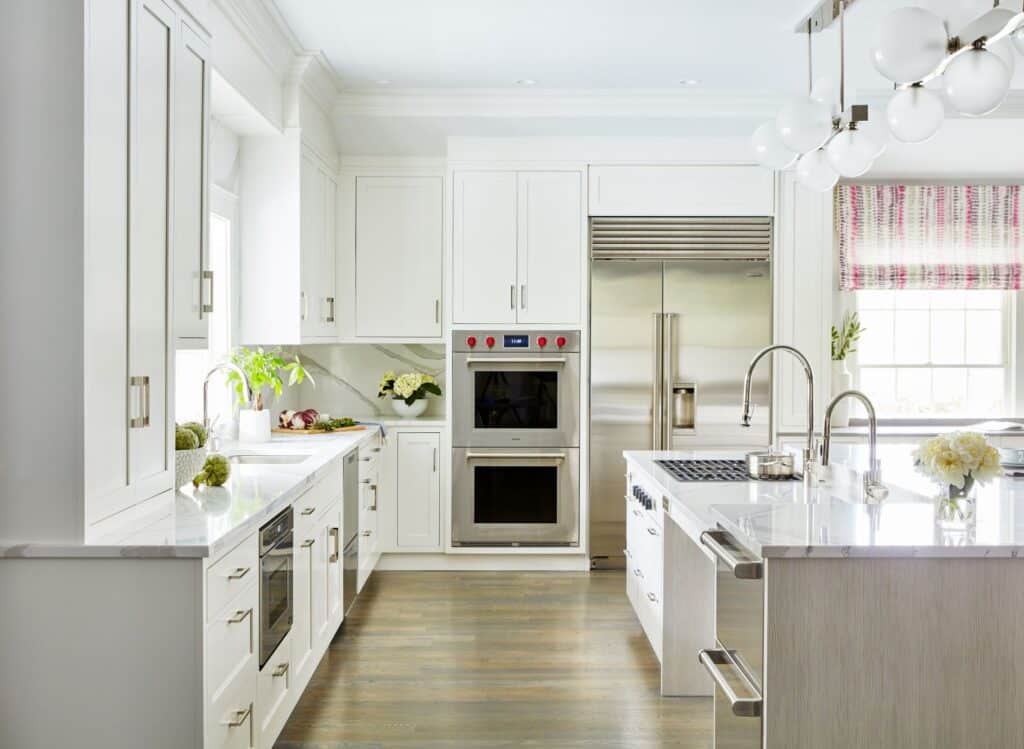
This is probably the most popular countertop surface on the market right now for a few reasons. First, it’s more affordable than marble or quartzite. This manmade surface is formed from natural stone crushed and reformed with resins and colors into a slab. Those with families and busy kitchens love the durability of the material: It’s scratch-, heat-, and mold resistant. Persnickety chefs who like a tidy kitchen will love its non-porous surface, which is resistant to staining, too. Plus, because it’s manmade, homeowners can select any color and pattern they want and know that whatever they order will be exactly what they get, as opposed to natural stones which are all slightly different and cannot be duplicated. “You get a very controllable, repeatable color fabrication process,” says Najmy. Because of this, quartz is a go-to if you want to mirror two countertops to match exactly, or if you want to continue a pattern around the stove so the design picks up right where it left off on the other side.
Quartzite
For the Bon Vivant
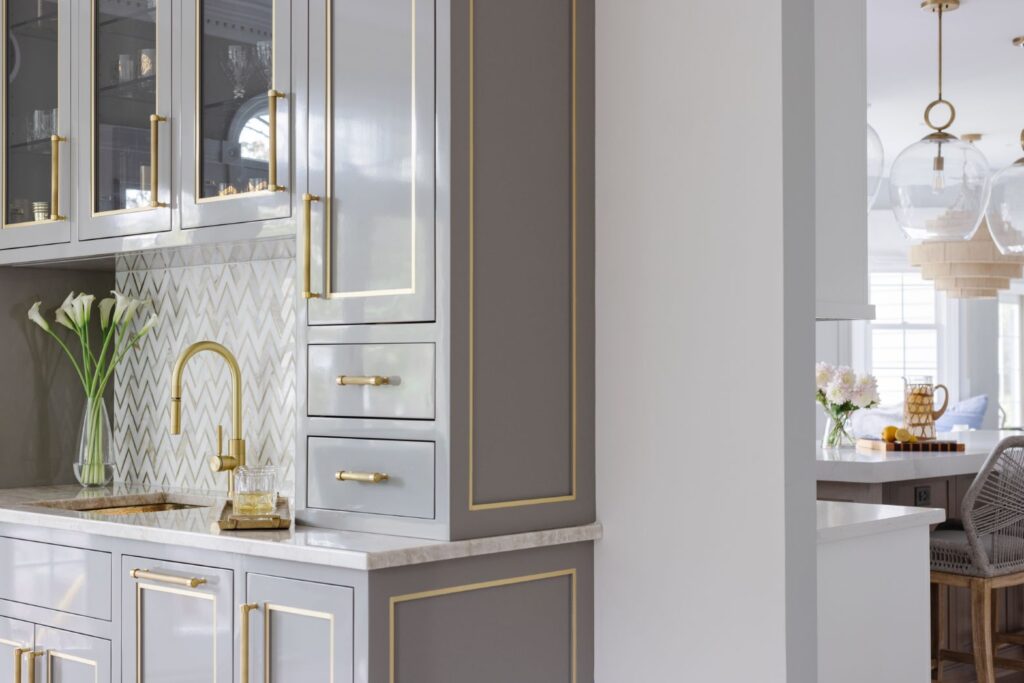
If entertaining is your end game, quartzite might be the answer. This natural stone is for the Veruca Salt in all of us who want it all: style, durability, ease of use and versatility. If you love the natural beauty of marble but don’t like the level of fastidiousness required to maintain it, quartzite comes in a variety of colors with dramatic veining that makes a statement in any space. “Marble is the only natural stone you can get in pure white but you can get these incredible off-white and gold veining patterns,” says Najmy. “If you’re going to do quartzite, I would definitely go shopping for it and pick your slab. It’s one-of-a-kind and comes from the earth so that is the beautiful part of it.” Plus, its durability makes it perfect for hosting wine tastings or cocktail parties when spills are inevitable.
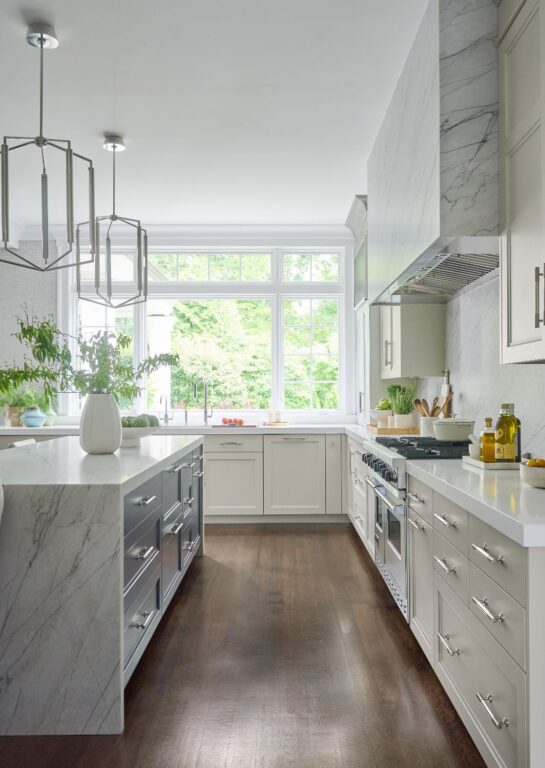
Porcelain
For the Modernist

Porcelain is an incredibly durable product, resistant to staining and scratches. “It’s very hard-wearing,” says Najmy. But what has rocketed porcelain to the top five in recent years as a countertop is its modern aesthetic. The most common thickness used for Porcelain countertops is half-inch slabs, so it tends to lend itself to a modern designed kitchen. In addition, it’s great to introduce as a backsplash,” says Deane. Plus, because it’s manmade, it can be produced in any color you want or in crisp white or dark black. Because marble and the look of marble is so popular right now, it has tripled in price since the 2020 pandemic, so porcelain can also be printed with a photograph of real marble to look as close to the real thing as possible—making it versatile enough to work in a traditional kitchen as well. Steer clear if you are klutzy in the kitchen, as it can chip if you drop something on it.
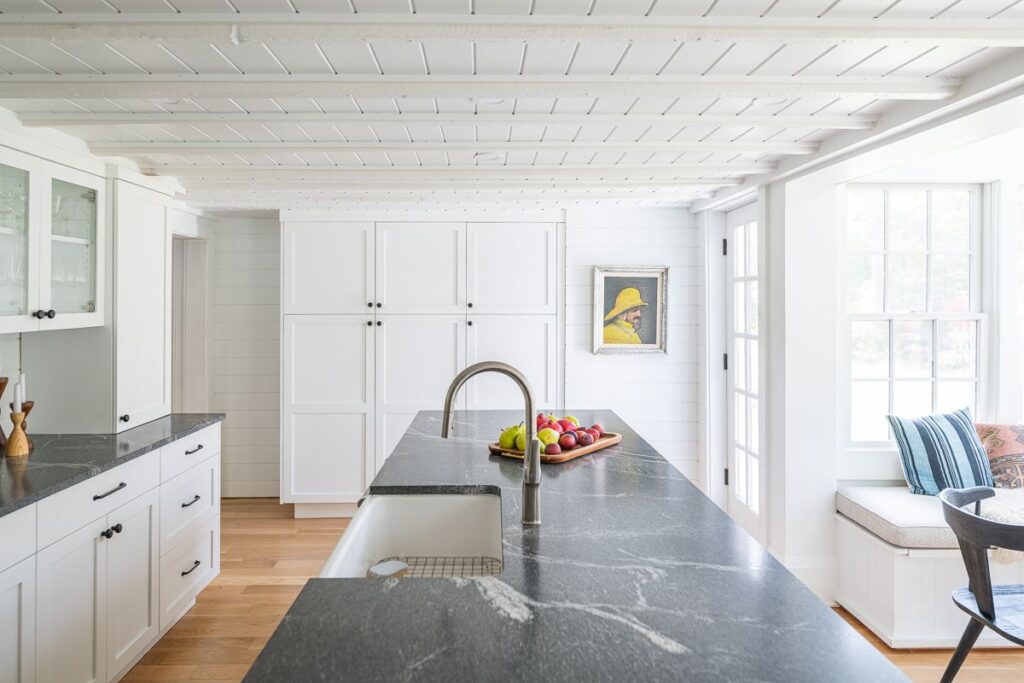
Granite
For the Pragmatist
Just one generation ago, granite was No. 1 in the race for the most popular kitchen countertop. The main reason is that people were drawn to the natural stone for its durability. It is scratch-, stain-, heat-, and mold resistant. These days, granite has fallen out of favor aesthetically for many people. “It looks very dated much like those avocado green bathroom suites of the ’70s,” says Peacock. The fact is, people have grown tired of its consistently speckled look. But its durability cannot be denied. “It will probably outlast all of us!” he adds. What’s more, it is the least expensive of all the surfaces we have discussed thus far, so those looking for something budget-friendly will find it in granite. While many homeowners aren’t choosing granite for its limited range of patterns and colors, it makes a great surface for outdoor kitchens and second homes. “You can find very beautiful granite if you really go on the hunt for it,” Najmy says. She recommends a honed slab to up the style.
Peacock recommends, if opting for granite, choosing black, which he says has the most contemporary look.
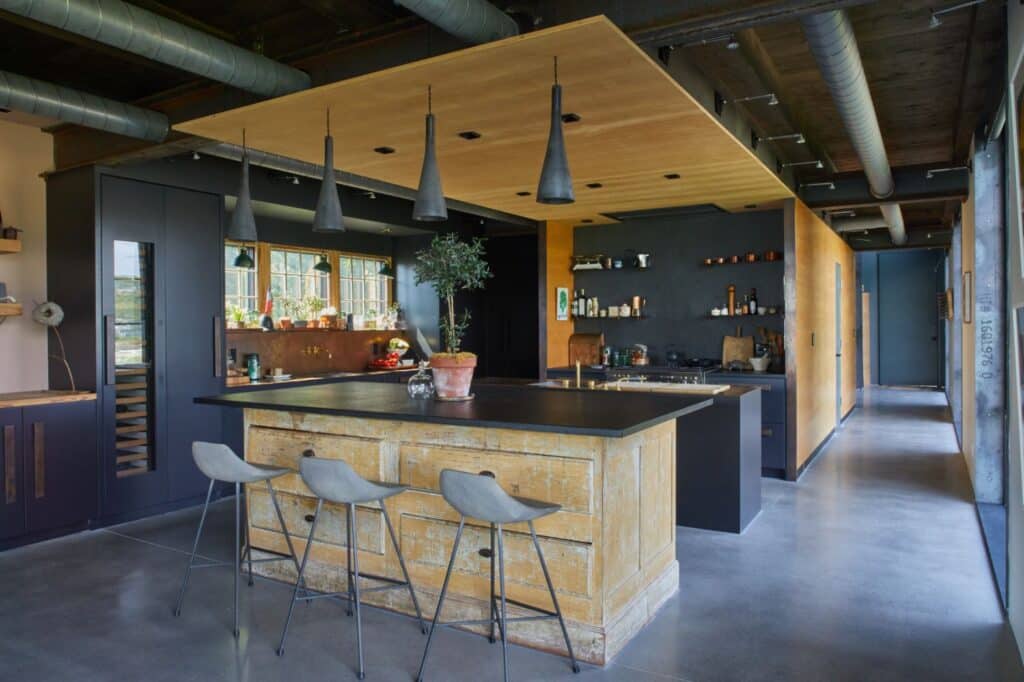
Caption for Feature Image: This modern kitchen designed by NuKitchens features a black granite island, marble perimeter and a wood bar counter, tying three popular surfaces together with one cohesive look.


